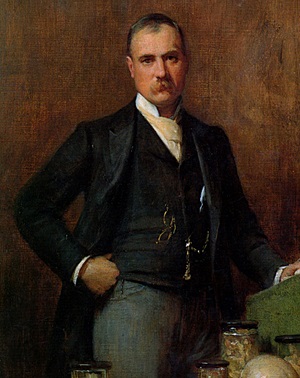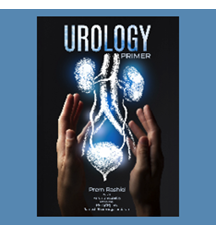2024 | Volume 25 | Issue 6
Author: Dr Peter F. Burke FRCS FRACS DHMSA FAMA
On 8 April 1896, all 17members of the Adelaide Hospital’s honorary medical staff resigned. They were protesting the actions of the hospital’s board of management, relating to an 1894 dispute over a senior nursing appointment, known now as the ‘Hospital Row’. Some 50 medical students left Adelaide to complete their fourth and fifth years elsewhere: the dispute closed the hospital and medical school for six years.
In 1896 the Inter-varsity boat race was won by Adelaide, the crew mainly comprising of medical students, including, one Henry Simpson Newland. These two unrelated events were to have great significance in the life of Henry Newland, RACS Founder Fellow.

Sir Henry Newland PRACS, 1953 Hele portrait; and 1945 Meldrum portrait
The RACS presidential portrait by South Australian artist Sir Ivor Hele, was completed in Sir Henry’s 80th year, 1953, financed with monies subscribed by the surgeons of South Australia. This magnificent portrait won the 1953 Archibald Prize and was presented to the College by Lady Newland in 1954.
In truth, Sir Henry’s wife preferred his 1945 Max Meldrum portrait, which is now in the offices of the Australian Medical Association (AMA) in Adelaide. It bears a plaque inscribed: ‘Henry Simpson Newland, Kt. Presented by the Members of the South Australian branch of the British Medical Association June 26th, 1946.
The fate of this portrait then took a turn when the surgeons of SA had it copied by the artist, Meldrum. This copy they presented to the Royal College of Surgeons of England (RCS) in 1953 to commemorate the 80th anniversary of Sir Henry’s birth.
That copy remains with the RCS, with an inscription attached, reading in part: ‘This portrait and tablet record the affection and respect of the Surgeons of South Australia and commemorate a life of unparalleled service to surgery and to his fellow men in the country of his birth.’
Sir Henry, in the gown of President of the RACS, is wearing the gold medal of the British Medical Association (BMA) in Australia, awarded in 1937: It should be noted that the Australian Medical Association did not come into being until 1962.
It was in 1909 that Sir Henry first assumed office in the BMA as Honorary Medical Secretary of the South Australian branch, becoming President in 1919. He served on the branch Council for 35 years—in 1921 being elected to the Federal Committee/Council, and retiring from that body in 1949, having been president for no less than 20 years.
At a meeting of the Council of the BMA held in London on April 13, 1955, it was resolved that Sir Henry be presented with the gold medal of the Association ‘for distinguished merit’.
The citation read in part, ‘your intellectual gifts, your highly estimable and lovable qualities of character and personality and your unremitting labours to promote the welfare of the profession and the community have won for you a unique place in the regard and affection of your Australian colleagues.’
Born in Adelaide on 24 November 1873, he was of the third generation of a pioneer family that settled on the south coast of South Australia in 1839. Educated at St Peter’s College, Adelaide, he had academic difficulty, entering the Adelaide University Medical School in 1892. Nevertheless, in 1896 he graduated, sharing first place on account of the ‘Hospital Row’, there were no house surgeon appointments.

Sir Frederick Treves
Aware of Sir Frederick Treves and the London Hospital, he decided to ‘chance his hand’ there. On arrival, his Adelaide degrees were not accepted, so he became a medical student again, attaining the ‘conjoint’ diplomas of MRCS and LRCP.
Despite this, Newland’s chances of a hospital appointment were bleak until he learned that Treves was president of the London Hospital Rowing Club. Newland promptly joined their training and was selected for the inter-hospitals race. Although St. George’s won that race, Treves appreciated Newland, and the position of house surgeon became his!
Newland obtained the FRCS in 1899 and was able to attend that College’s Centenary Dinner in 1900. Fifty years later he attended the 150th anniversary dinner, presenting a congratulatory address from the RACS,—the only Fellow to attend both functions.
As a vacancy on the surgical staff of the London Hospital seemed unlikely, Newland returned to Adelaide in 1902, en route, visiting Theodor Kocher in Switzerland and George Crile in Cleveland.
It was two years before he was appointed an assistant surgical consultant at the Adelaide Children’s Hospital and another five years before he became a senior. Wanting to work at the Adelaide Hospital, he accepted an initial appointment as honorary radiographer. It was not until 10 years after his return to Adelaide, that he was appointed a visiting surgeon!
Accordingly, he started a private practice in partnership, also becoming the first Adelaide student to gain the degree of Master of Surgery by examination.
In 1914 WWI came—at 40 years of age Newland was among the first to enlist. He was posted with the rank of Major with the first Australian Stationary Hospital (1ASH), serving in Egypt, Gallipoli and Lemnos.
Years passed and by 1917 he was in France working with the 3rd Australian Casualty Clearing Station. At the year’s end he was appointed as commander of the Australian section at the Queen Mary Hospital, Sidcup. Here pioneering surgical procedures were undertaken, neurosurgical and plastic, with an emphasis on facio-maxillary injuries.
He represented the Australian Army Corps on the Council of Consultants at the War Office in London, and at the Inter-Allied Surgical conferences in Paris. For all these contributions he was awarded the Distinguished Service Order (DSO) in 1918, and in 1919 was appointed Commander of the Order of the British Empire (CBE).
At the 11th Australasian Medical Congress in 1920, in Brisbane, he was president of the Section of Surgery—the very meeting at which the formation of the RACS was first proposed in a motion brought forward by Hamilton Russell. The motion was lost and Newland commented that he saw the formation of any new association as ‘a dagger in the heart of the BMA’.
Nevertheless, following the death of George Syme in May 1929, he became president of the new college serving a never-to-be-equalled term from 1929 to 1935. During his tenure milestones included the approval by King George V of the inclusion of the prefix ‘Royal’ in the name of the College, the Grant of Arms, the presentation of the Great Mace and the institution of the Syme Oration. He was knighted in 1928.
The crowning achievement of those years was the opening of the College headquarters in Melbourne on 4 March 1935 by the president of the RCS England.
Over many years he was active in every important medical movement in the Australian Commonwealth— those offices included that of Chairman of Directors of the Australasian Medical Publishing Company and president of the Flying Doctor Service.
He married Ellen Mary Lindon, and they had a son and two daughters all of whom survived him.
Sir Henry had a very large private practice, at its peak after WWI. He operated in several hospitals, and for 20 years was intensely active as surgeon, teacher and administrator.
He died on 13 November 1969, a few days short of his 96th birthday.

